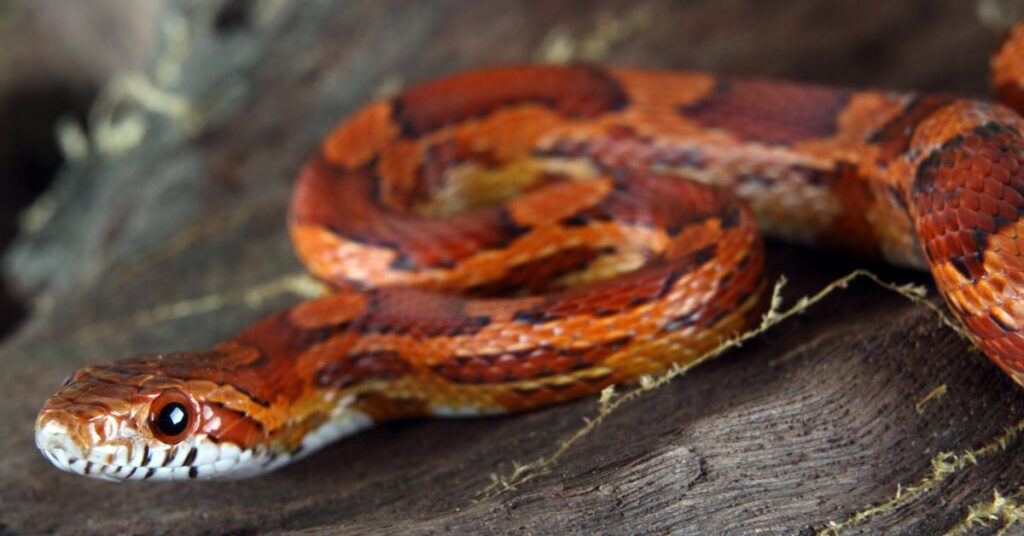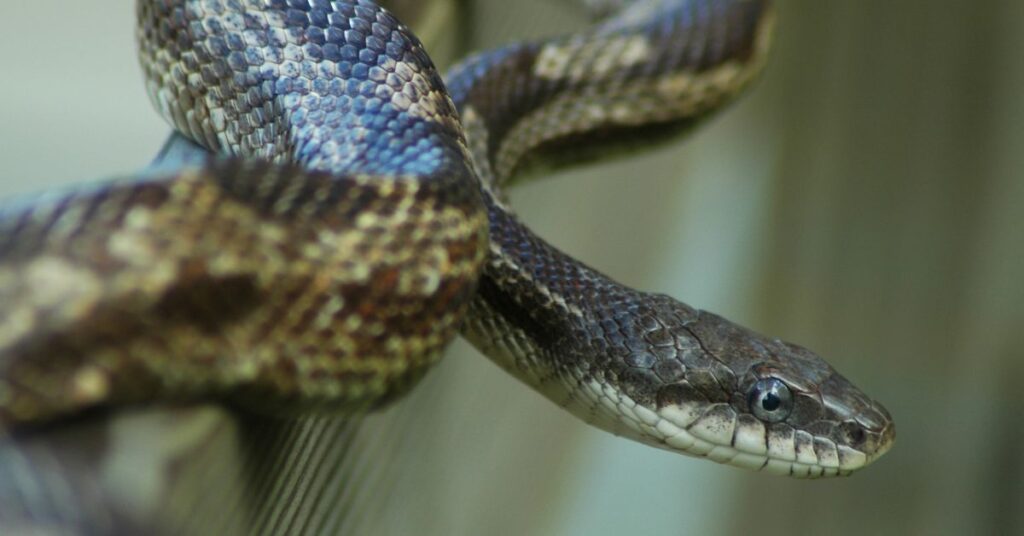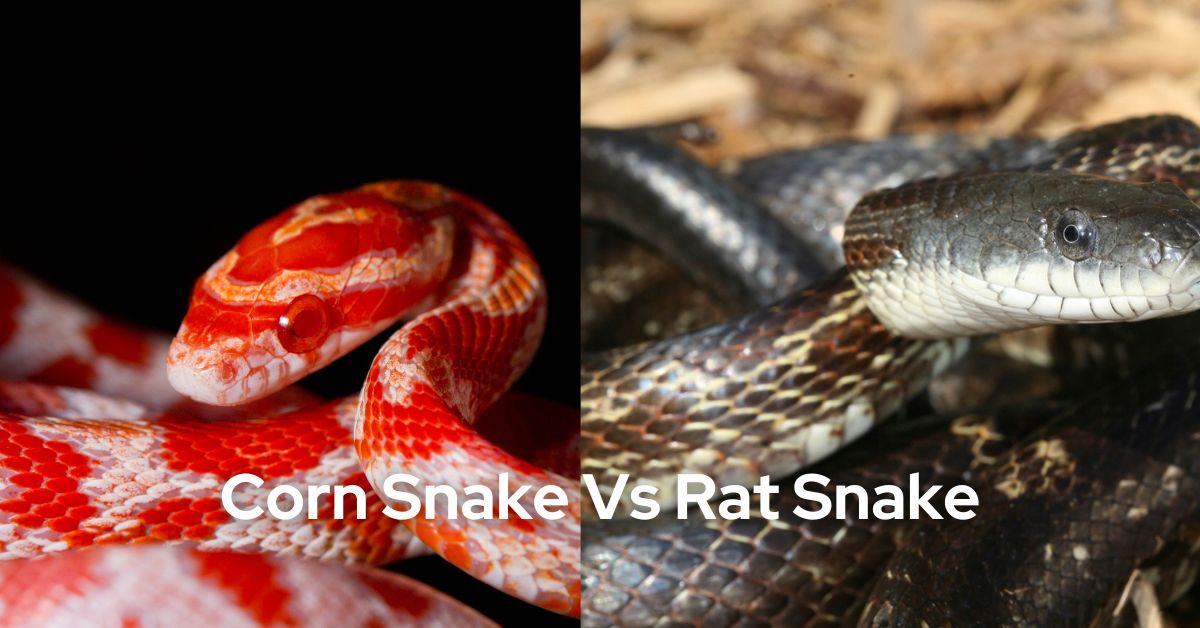Most people think corn snakes and rat snakes are the same. It’s a fact that corn snakes are a sub-species of the rat snake family, but there are several differences between the two. Firstly, rat snakes have several other species besides corn snakes, including the eastern rat snake, yellow rat snake, and the Texas rat snake.
Rat snakes belong to the subfamily of Colubrinae of the Colubridae family. The Colubridae also includes subfamilies like the vine snakes, indigo snakes, and king snakes. All these families of snakes are constrictors. They squeeze their prey to death before swallowing them as a whole.
What is a Corn Snake?

Corn snakes belong to the subfamily of rat snakes. Vivid-colored scales with black & white strikes on the belly remain the most notable feature of this snake. They are pretty good at hiding; finding them in the daytime is rare. You will likely encounter them in areas with high food supplies or calmness, such as grown fields or abandoned fields. They feed on rodents, birds, lizards, small mammals, frogs, and birds’ eggs.
The average length of this snake ranges from 2 to 6 feet, and it is found in areas like Mississippi, Virginia, Maryland, Tennessee, and Southern Florida in the United States.
What is a Rat Snake?

Rat snake belongs to the family of Colubridae, which are constrictors. Although the word “constrictor” might scare you, remember that rat snakes only eat bird eggs, rodents, frogs, lizards, and other animal species. They are non-venomous and generally not a threat to humans. They are quite pretty in color and are widely considered a pet by people.
The average length of a rat snake ranges from 6 to 9 feet, and they are found in the Southeastern region of the United States.
Difference between Corn Snake and Rat Snake
| Key Difference | Corn Snake | Rat Snake |
| Scientific Name | Pantherophis guttatus | Ptyas mucosus |
| Species/family | They belong to the sub-family of the rat snakes family colybrinae. | They belong to the subfamily of Colubrinae, which belongs to the Colubridae family. |
| Head Shape | Corn snakes head look the same as rat snakes but it doesn’t have pits on it. | Rat snakes have a wedge-shaped head that looks like a head of a turtle. The skulls of rat snakes has more holes aka foramina. |
| Scalp | The scalp is shiny and scaly with a v-shape. | Rat snakes have pits on their head. Their skull is also shiny and scaly but it is right above their eyes. |
| Size | The average size of corn snakes is between 2-6 ft, which is shorter than rat snakes. | Rat snakes are larger than corn snakes with an average length between 6-9 feet. |
| Body feature | Corner snakes are thick-bodied with rounder eyes and larger heads. | Rat snakes has smaller scales. Their body is thinner and longer than corn snakes. |
| Color | Corn snakes also have a brownish hue slightly duller than rat snakes. They have reddish scales with large orange/brown blotches and patterns. | Rat snakes have a brighter red or yellow colored body. Some rat snakes comes in different color and hues. Eastern rat snake: BlackYellow rat snake: yellowGray rat snake: Gray with black blotches on back and belly |
| Behavioral attributes | Corn snakes are quite docile. | The behavior of rat snakes differs based on their species. Generally, they are calm and nocturnal. Eastern rat snakes are very shy in nature and rarely seen outside. |
| Defense mechanism | Corn snakes produce a foul smell to threaten its predator or anyone picks them up. | Rat snakes use Batesian mimicry technique, where they vigorously vibrate their tail like poisonous rattlesnakes to ward off a threat. |
| Habitat | Mostly found in the southeastern United States including states like Florida, Virginia, Tennessee and Maryland. | Rat snakes are widely located throughout North and Central America. Eastern rat snakes are found in Louisiana and southern Wisconsin.Texas rat snakes are commonly found in the state of Texas. Yellow rat snakes are found in coastal regions of North and South Carolina, Georgia and Florida. Gray snakes are found in central regions of the United Stated. |
| Reproduction | Breeds in spring. | Breeding season is between springs to summer. |
Summary
Both corn and rat snakes are non-venomous and pose no threat to humans. They primarily feed on rodents and small mammals. These species are mostly submissive and show no sign of aggression. They only act when they feel an extreme threat from a predator. Since they are nocturnal, you would rarely see them during the daytime. Rats and corn snakes could be good and safer choices if you are looking for a pet snake.
FAQs
Rat Snake or Corn Snake: Which is the better pet?
Both rats and corn snakes make excellent pets due to their docile nature. However, rat snakes are longer than corn snakes, ranging from 6-9 feet, while corn snakes come between 2-6 feet, usually 4ft.
Rat snakes are a little more aggressive than corn snakes, and their bites can be painful, although they rarely bite.
Both snakes feed on the same diet, including rodents, birds, birds’ eggs, and small mammals. However, corn snakes are less picky eaters as they can feed on pre-killed prey, while rat snakes prefer preying on live animals.
Is a Rat Snake the same as a Corn Snake?
Corn snakes belong to the subfamily of rat snakes. However, Corn snakes are smaller and a bit thicker in size than rat snakes. They can be recognized by their stripes, starting from their eyes and going all the way through their jaws. They also have bold black & white zebra-like patterns on their bellies.
Meanwhile, rat snakes are slender and longer than corn snakes. They are vivid in color, with uniform blotches and smaller scales than corn.
Are Rat Snakes aggressive?
All species coming under the rat snake family are generally docile and shy. They rarely attack anyone. Feeling threatened, they vigorously vibrate their tails, mimicking rattlesnakes to scare off their predator. Compared to corn snakes, rat snakes are a lil more aggressive, but they rarely attack humans unless they are attacked.







